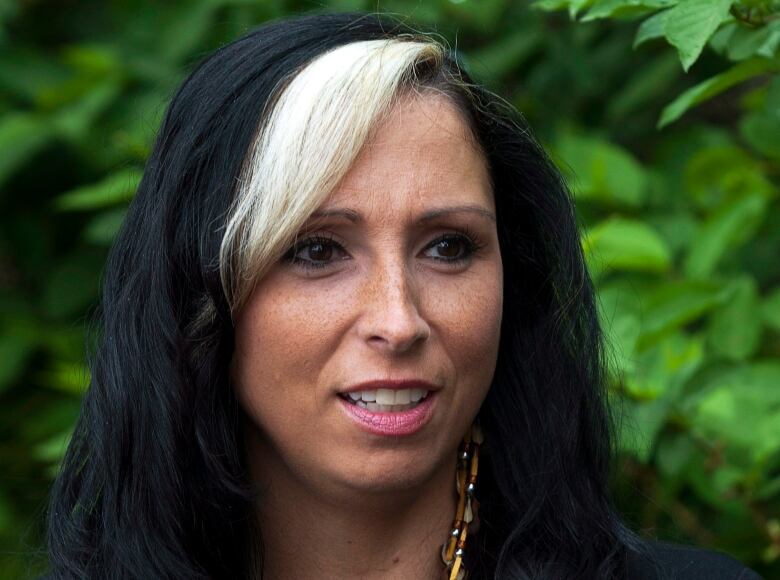'Dj vu' for First Nations women, as Ottawa seeks more time to rid Indian Act of sexism
Elimination of gender-based discrimination from Indian Act long overdue, say First Nations advocates

As the federal government seeks more time to remove gender-based discrimination from the Indian Act, some First Nations women say they've waited long enough.
"We're talking about a core fundamental human right, which is the right to equality," said Pam Palmater, a Mi'kmaqlawyer and member of the Eel River Bar First Nation. "They have no choice but to fix it."
The federal government introduced Bill S-3 last October, after a Quebec Superior Court ruled that provisions in the Indian Act discriminate against the descendants of First Nations women, making it more difficult for them to pass on Indian status to their descendants.
- Life under Indian Act 'horrible existence,' senator says,but there's hope
- Ottawa to change Indian Act afterDescheneaux ruling
The court's decision was based on the case of Stphane Descheneaux, a member of the Abenaki of Odanak. Descheneaux was unable to pass on his status to his three daughters, because he received it through his grandmother, who lost her status when she married a non-Indian man.
Bill S-3 was intended to address the inequities identified in the Descheneaux decision.
It is the third bill since 1985 aimed at removing gender-based discrimination from the legislation, and in all three instances, the government only took action after being compelled to do so by the courts. But these efforts have been piecemeal, and like the previous bills, S-3 only went so far and excluded women who lost their Indian status before 1951.
In response, the Senate opted to propose an amendment that would remove all gender-based discrimination from the act. Known as the "6(1)(a) all the way solution," the amendment would include women and their descendants currently excluded by the 1951 cutoff date.

But Palmater says the government has already had all the time it needs.
"Canada, and specifically [Indigenous] and Northern Affairs, has been consulting and engaging on the issue of gender discrimination in the Indian Act since the 1970s," Palmater said. "They literally have 50 years of talking to First Nations on this issue."
'It's dj vu all over again': McIvor
Sharon McIvor has seen this all before.
The B.C. lawyer andmember of the Lower Nicola Band first challenged the Indian Act in 1985, just months after some of its most blatantly discriminatory provisions were removed.
Then, too, McIvor said, the government promised to consult further and fix the rest of the act later on.
"As Yogi Berra used to say, 'It's dj vu all over again,'" she said.
This time, Bennett warned the standing committee on Indigenous and Northern Affairs last week that the Senate's amendment could have "dire unintended consequences." The government says preliminary estimates suggest between 80,000 to two million people could receive Indian status as a result of the Senate amendment, rather than thousands under S-3 as it was written.
"Accepting this amendment absent adequate consultation and without knowing the practical implications for communities and individuals would be irresponsible," a statement from the minister's office said.
Nothing more than a stall tactic
To Lynn Gehl, an Algonquin Anishinaabe advocate and writer, the government's plan amounts to nothing more than excuses and stall tactics.
"We have the Charter of Rights and Freedoms in this country to protect people from sex discrimination, but it's not working for us," she said.
Gehl won her own 22-year legal battle against the government earlier this year, fighting for status for First Nations children of unknown or unstated paternity.

While the government could immediately rid the Indian Act of sex discrimination by accepting the amendment, Gehl said, it has instead decided to "confound and confuse" the issue.
"They don't want to end this discrimination," Gehl said. "The ultimate goal is to get rid of status Indians and get rid of treaty rights so much so, that they'll target women and babies."
Decades of waiting
Bennett said she is personally committed to working with First Nations, organizations and affected individuals on the issue.
"I stand in solidarity with the Indigenous women who have been fighting on these issues for decades," Bennett told the Commons' Indigenous affairs committee last Thursday.
But Gehl said it rings hollow for Indigenous women who have spent their lives fighting this issue.
"That's nice that she's personally committed," Gehl said. "It doesn't mean much to us."
McIvor, too, said she has grown tired of politicians telling her she can count on them to keep their word.
"You don't know how many very nice women have told me that in the last 30 years," she said. "And here I am."












_(720p).jpg)


 OFFICIAL HD MUSIC VIDEO.jpg)
.jpg)



























































































